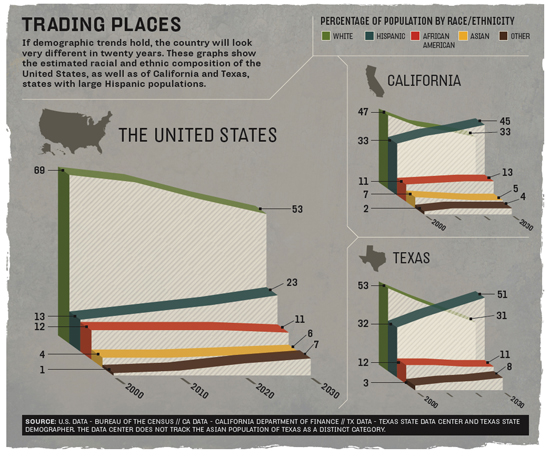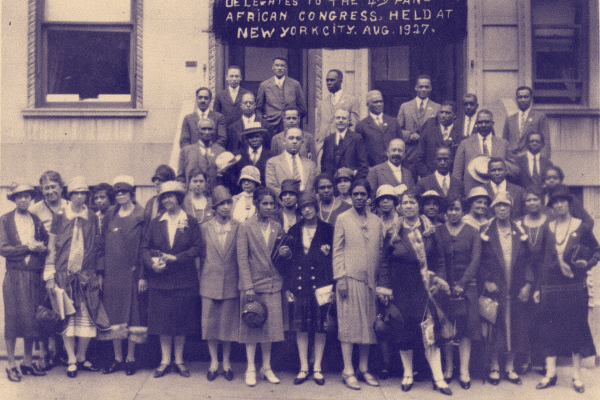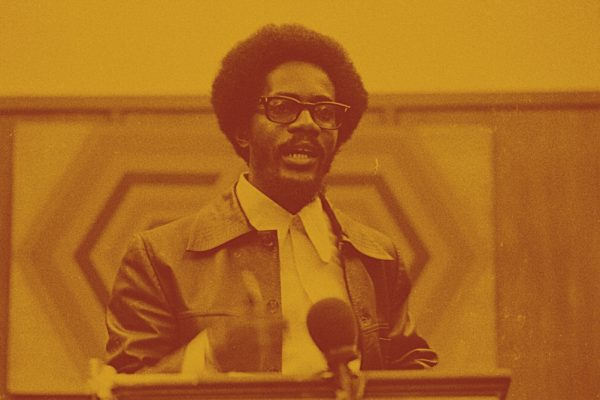Alabama, Arizona, Georgia, Mississippi, and other states have recently enacted measures calling for stricter enforcement of existing immigration laws. Some of these measures even aim to deny birthright citizenship to U.S.-born children of illegal immigrants. These initiatives, overwhelmingly supported by Republicans, drive Hispanics to vote increasingly for the Democratic Party.
The laws come as a reaction against profound changes in the U.S. population. According to U.S. Census projections, from 2000 to 2030 the Hispanic share of population of the United States will nearly double, from 13 percent to 23 percent. In the same period, the non-Hispanic white population is expected to drop from 69 percent of the total to 53 percent. The Census Bureau forecasts that by 2042 whites will be a plurality of the population, but no longer a majority.
That shift is already being felt in many states. California ceased to be majority white in 2000. The 2010 Census estimates that whites and Hispanics are nearly equal in numbers there, and the Bureau projects that by 2030 the largest state will be 45 percent Hispanic and just one-third white.

Texas—the second-largest state—is changing even faster. In 2000, 53 percent of Texans were white, and 32 percent were Hispanic. By 2010, whites had fallen to 45 percent of the population and Hispanics risen to 39 percent. By 2020, those numbers will be reversed. The Office of the Texas State Demographer predicts that in 2030 the state will be majority Hispanic.
Most of the demographic change in the American electorate today comes not from waves of new immigration but from the echoes of past immigration: the children of immigrants and their children. Nationwide roughly 21 percent of white citizens are under eighteen years old, compared to 44 percent of Hispanic citizens. Over the coming decade, aging alone will increase the number of Hispanics who are eligible to vote by 25 percent.
Hispanic voters will continue to emerge in Texas, California, and other states where Hispanics have long been gaining in numbers. But the tide of Hispanic citizens is rising in some surprising places as well. The states with the highest percentage of Hispanic citizens under eighteen years old are North Carolina, Georgia, Alabama, Tennessee, Arkansas, and South Carolina. And closing the borders will not appreciably affect the increasing numbers of Hispanics and Hispanic voters in the United States for a simple reason: the Hispanic population is already sizable and has a much higher birth rate than the white population. The policies that the parties pursue now on immigration, education, and other matters that particularly affect Hispanics will define electoral politics for generations to come.








